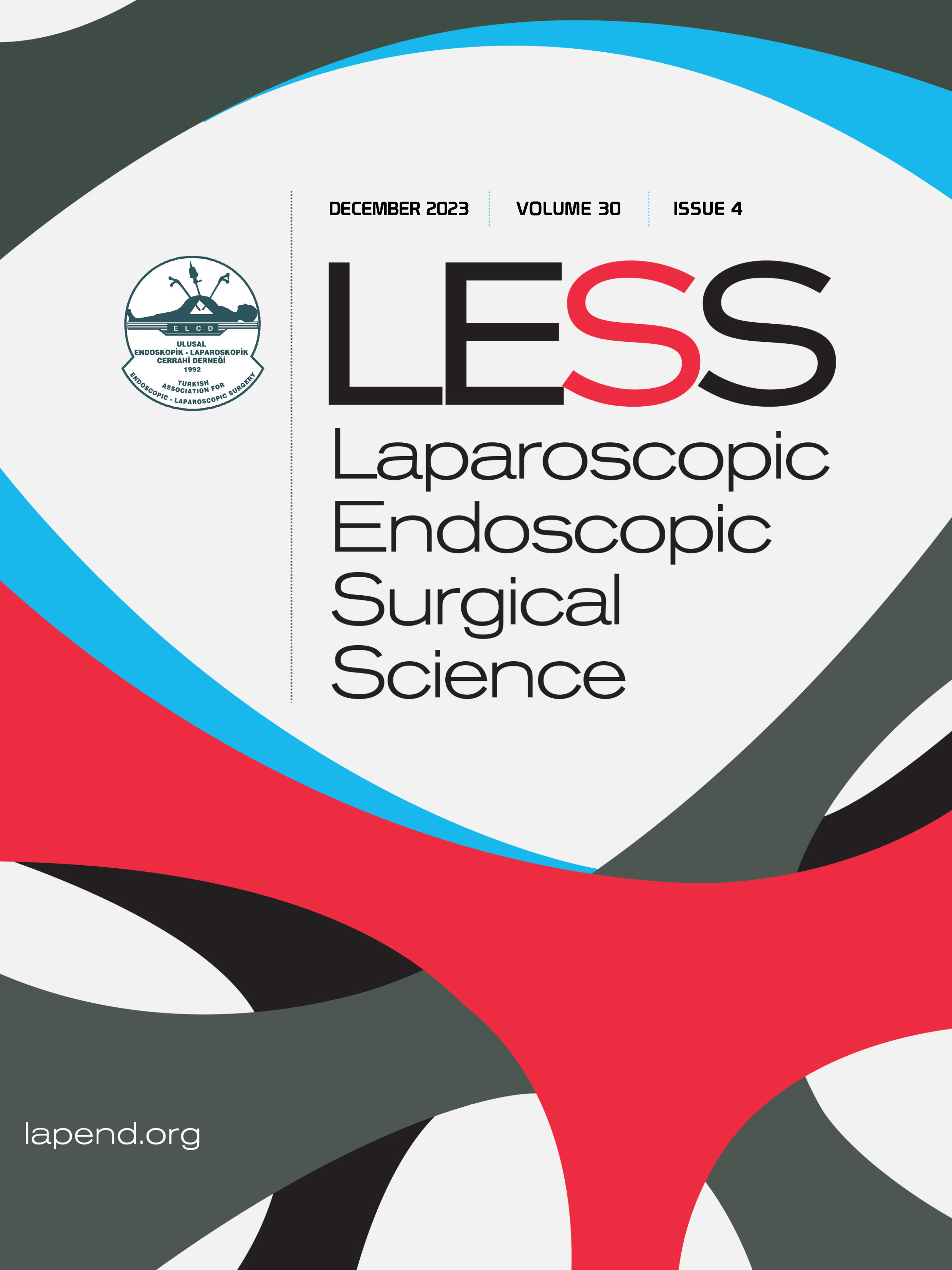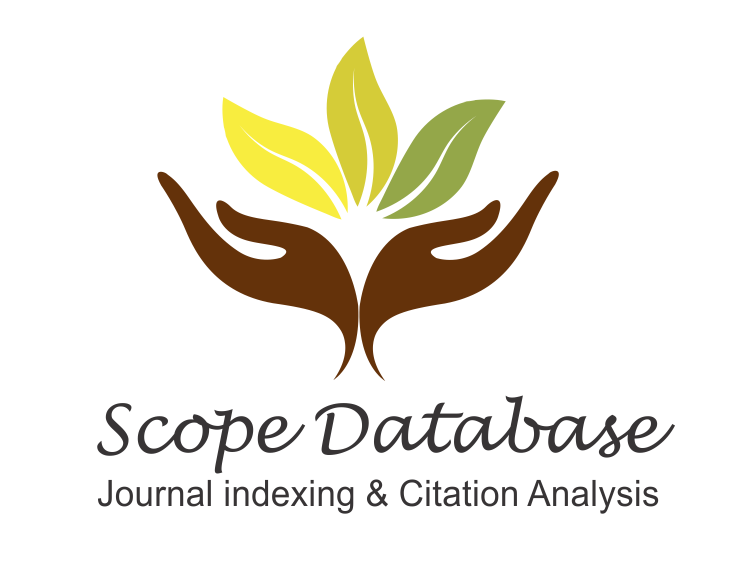Volume: 13 Issue: 4 - 2006
| RESEARCH ARTICLE | |
| 1. | Evaluation of the Postoperative Pain and Recovery Characteristics of Intravenous Paracetamol on Patients Undergoing Laparoscopic Cholecystectomy Ziya Salihoğlu, Murat Yıldırım, Şener Demiroluk, Güner Kaya, Adem Karataş, Metin Ertem Pages 155 - 160 INTRODUCTION: Evaluation of the postoperative pain and recovery characters of intravenous paracetamol on patients undergoing laparoscopic cholesystectomy. We aimed to evaluate the pain and recovery characters of intravenous paracetamol during the early postoperative period of laparoscopic cholesistectomy. METHODS: 40 patients of ASA I-II physical status were included to the study. Patients were divided into two groups, 1 gr intravenous paracetamol was infused to the patients in the paracetamol group in 15 minutes following entubation before the surgery starts, and 100 ml serum physiologic was infused to the other group. Patients were asked to make verbal and visiual pain evaluation and if verbal pain scale >2 and visual pain scale >4 morphine 2 mg was applied. Pain was evaluated every 5 minutes and 2 mg morphine was given till sufficient pain relief was achieved. When sufficient pain relief was achieved evaluation period was done in every 15 minutes. Patients who fullfilled 10 points according to the Alderete recovery were sent to their rooms. First requirement of morphine, total dosage of morphine, recovery room duration and the sides effects (nausea, vomiting, over sedation) were recorded. Time to extubation, and complications like coughing, and laryngospasm were also recorded. RESULTS: All the parameters were signigicantly different in the control group compared to paracetamol group. DISCUSSION AND CONCLUSION: We found that intravenous paracetamol was effective on early postoperative pain control and had no negative effects on recovery characteristics of patients who had laparoscopic cholesistectomy. |
| REVIEW | |
| 2. | A Different Technique of Presentation for Scientific Congress: Video-Poster Ali Doğan Bozdağ Pages 162 - 166 The presentation in scientific congress and symposiums may be in two different forms: as poster or oral presentation. Each method has some advantages and disadvantages. In each congress, few number of oral presentations are accepted compared with the number of posters, but it has the advantage of using various methods such as slide show, and film presentations. On the other hand, oral presentation have time and number of audience limitations. Poster presentation has no video or slide show; its visual effect is supported by using figures, graphics, and photographs. But its presentation time is long and it reaches too many people when compared with oral presentation. If the advantages of these two presentation types are combined, a new presentation type will be obtained. This new presentation is a video-poster. We take a piece of sheet with poster size, and incise it as to put a mobile DVD player in it. The DVD player is opened 180 degress so the sceen and the body of the DVD player are in the same plane. The poster is fixed to the sheet and the part on the screen of DVD player is cut off, so the screen seems to be a picture on the poster. Then this video-poster are fixed to the panel. DVD player starts to show the videopresentation of the operation. It is set as to return to the beginning, when the operation ends. This video-poster combines the advantages of both types of presentations, and it has no time limitation. |
| RESEARCH ARTICLE | |
| 3. | Diagnostic Effectivness of Simultuneous Application of Laparoscopy & Hysteroscopy in Determination of Dysmenorrhea Etiology Cenk Güven, Ali Baloğlu, Incim Bezircioğlu, Ali Yavuzcan Pages 167 - 172 INTRODUCTION: The aim of this study was to examine the diagnostic effectivness, procedural duration and peri and postoperative mortality and morbidity rates of simultaneous application of hysteroscopy and laparoscopy in a group of patients complaining of dysmernorrhea whose patient histories suggested pelvic organ pathology and the physical and ultrasonographic examinations did not reveal any organic cause and who were consequently referred to laparoscopy. Our findings were compared with the data in the literature about the patients to whom solely laparoscopy was applied. METHODS: The dat regarding the diagnostic effectivness, procedural duration, duration of hospital stay, operative mortality and morbidity rates of hysteroscopy application with simultaneous laparoscopy applied to a case series of 37 patients who were referred to laparoscopy in the 1st Obstetrics and Gynecology Department of Izmir Ataturk Education and Research Hospital with preliminary diagnosis of secondary dysmonerrhea were compared to the data obtained from the case series in the literature including patients to whom laparoscopy was applied alone. RESULTS: Findings regarding the cause of secondary dysmonorrhea were determined via laparoscopy in 57% and hysteroscopy in %19 of the patients. When laparoscopy and hysteroscopy were applied together this rate was 75%. The average duration of operation of hospital stay was 2.9 days and febrile morbidity rate was 8%. DISCUSSION AND CONCLUSION: In determining the etiology of dysmenorrhea, hysteroscopy applied simultaneously with laparoscopy contributes to diagnostic effectiveness. |
| 4. | Endoscopic Balloon Dilatation in the Treatment of Peptic Gastric Outlet Obstruction Adem Akçakaya, Gürhan Baş, Ismail Okan, Mustafa Şahin Pages 173 - 177 INTRODUCTION: Endoscopic balloon dilatation (EBD) has been used for the treatment of peptic gastric outlet obstruction. The aim of this study is to evaluate the effectiveness of the endoscopic ballon dilatation procedure in the treatment of patients with peptic gastric outlet obstruction. METHODS: Paients who underwent endoscopic balloon dilatation due to benign gastric outlet obstruction between December 2001 and August 2005 in surgical endoscopy unit of Vakıf Gureba Training and Research Hospital were prospectively documented Gastric outlet obstruction was defined as vomiting and recent weight loss and stenosis preventing the passage of a 9-mm diameter endoscope to pyloric or postpyloric region. Exclusion criteria were the following: refusal undergo dilatation and presence of maligancy. Biopsy specimens were obtained endoscopically for histopathologic evaluation if required and for a rapid urease test for Helicobacter pylori infection. Dilatation was carried out with through-the-scope balloon dilators (Boston Scientific, Watertown, MA, USA). Proton pump inhibitor was used for treatment of peptic ulcer and Helicobacter pylori was eradicated when present. RESULTS: Thirty-five patients (25 men, 10 women: mean age 43±12 (27-71 years) underwent EBD. Gastric outlet obstruction was due to pyloric (n: 25) and duodenal (n: 10) obstructive lesions. Multiple dilatations were required (mean 3 (2-5) times). Only one patient required surgery due to failure of treatment. The mean follow-up period was 24±12 months. The mean time span among dilatations was 4,2± (3-13) months. One case of minimal bleeding and another patient with closed perforation were documented as complications. Both were managed conservatively. DISCUSSION AND CONCLUSION: Endoscopic balloon dilatation for the treatment of gastric outlet obstruction is a simple, safe and efficacious minimally invasive procedure. |
| REVIEW | |
| 5. | Risks for Endoscopy Personnel and Steps to Prevent Them Nuray Akyüz Pages 178 - 181 Safety of endoscopy personnel is of utmost importance. Consistent practice must be maintaned to prevent the transmission of diseases and to protect them against the dangers of chemicals used in cleaning and high-level disinfection of endoscopes. In addition, precautions must be taken against radiation, laser, electric, f,re hazards and the insufficiency of physical environment. All personnel performing or assisting in endoscopic procedures and personnel responsible for reprocessing care, cleaning and disinfecting of the equipment, must be knowledgeable about risks in endoscopy and the prevention methods. They must be educated with postgraduate education programmes. |















